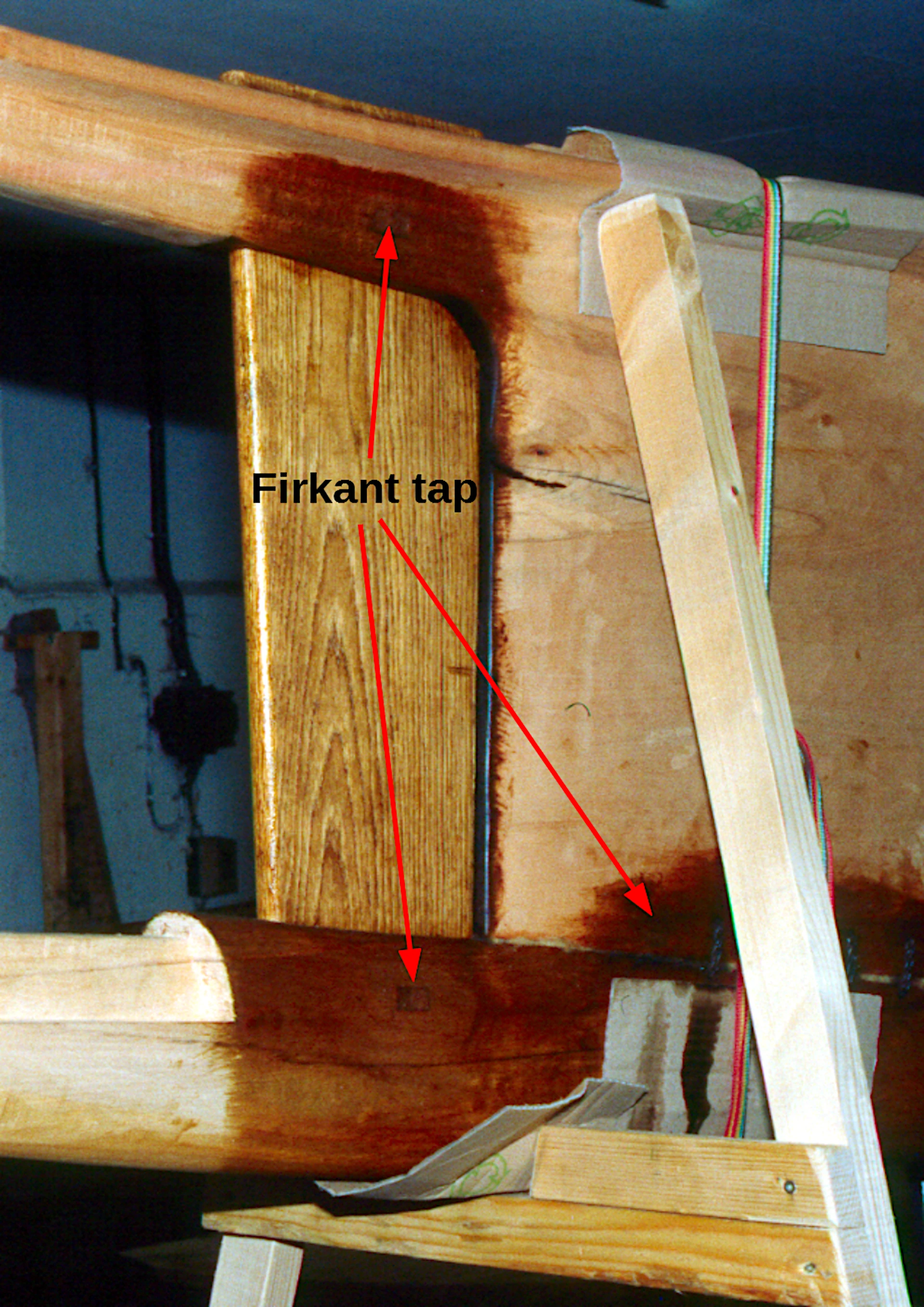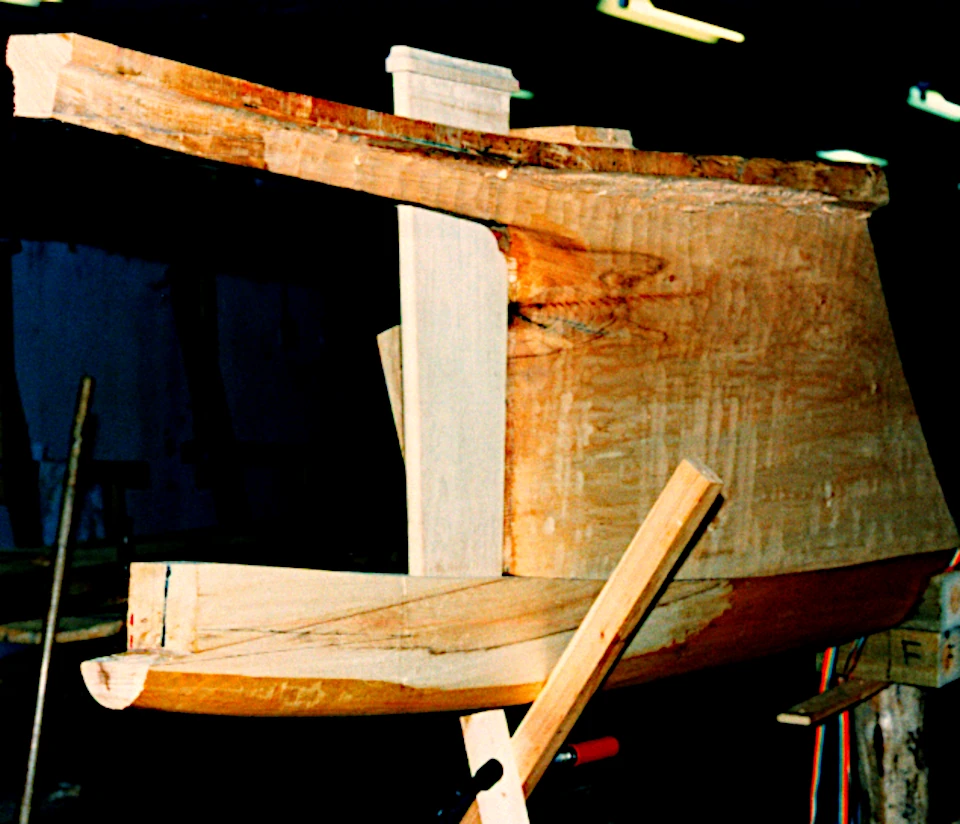Keel stretching party
We had decided to organise a keel stretching party once both bows had been mounted on the bottom plank.
In addition to sewing the lower edge of the bow to the bottom plank, the bow was also attached to the bottom plank with a square pin that ran across the bow and the edge of the bottom plank that guided the bow. Finally, there was a vertical locking plank that started in an elongated recess at the beginning of the bottom plank to the lower horn and ran up through a slot in the bow extension towards the upper horn.
This locking plank was secured with transverse square pins that ran through the base of the two horns and through the locking plank. This was also fitted with a boss at the top that stepped down towards the top of the upper horn. Woolen cords saturated with ox tallow were placed under this boss as a gasket to prevent water from penetrating the horn.
Both the locking planks and the pins were made of oak.
Once the sewing was complete and the locking planks had been fitted, the keel stretching party was organised with speeches and mead drinking. It took place on 23 March 1996. It was an open house and was attended by both members and local residents. One of the speeches claimed that we were now halfway to the completion of the boat. We needed to get smarter.






